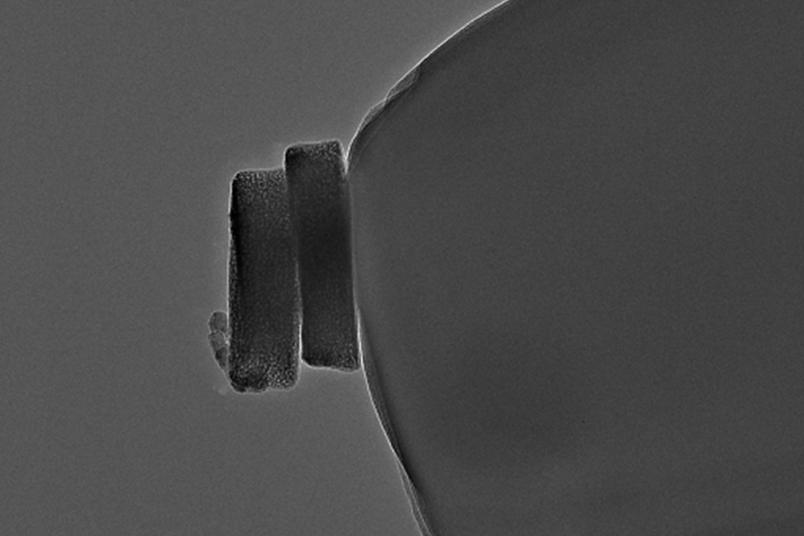
Using a robotic arm
Catalytic activity of individual cobalt oxide nanoparticles determined
Analyzing nanoparticles individually is a challenge precisely because they are so small. A new technique using electron microscopy and a robotic arm could make the process much easier.
Precious metal-free nanoparticles could serve as powerful catalysts in the future, for example for hydrogen production. To optimize them, researchers must be able to analyze the properties of individual particles. A new method for this has been suggested by a team from the Center for Electrochemistry at RUB and the Institute of Inorganic Chemistry at the University of Duisburg-Essen (UDE). The group developed a method using a robotic arm that allows them to select individual particles under an electron microscope and place them on a nanoelectrode for electrochemical analysis. The method is described in the journal Angewandte Chemie, published online in advance 19 November 2020.
Important for finding optimal catalysts
For the studies, the scientists used hexagon-shaped particles of cobalt oxide. The particles catalyzed the so-called oxygen evolution reaction. During the electrolysis of water, hydrogen and oxygen are formed, with the limiting step in this process currently being the partial reaction in which the oxygen is formed. More efficient catalysts for the oxygen evolution reaction would simplify the efficiency for electrochemical water splitting under formation of hydrogen. Nanoparticle catalysts are supposed to help with this. Since their catalytic activity often depends on their size or shape, it is important to understand the properties of individual particles in order to find the optimal catalysts.
“We believe that by applying the proposed methodology, single particle analysis of catalyst materials has finally reached the point of reliable and comparatively simple sample preparation and characterization, which are crucial for establishing structure-function relationships,” the authors write in conclusion.